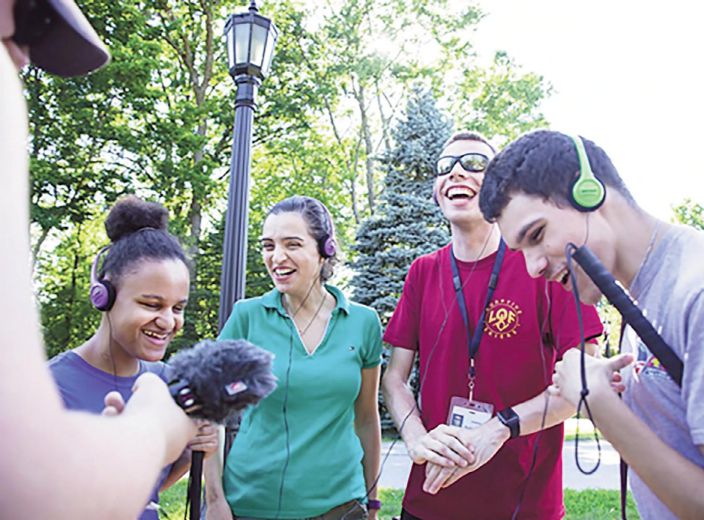WHAT THE RESEARCH TELLS US ABOUT YOUTH WITH DISABILITIES
"There are approximately 239,700 transition-age youth who have VI, ages 16 to 20 years" (Erickson, Lee, & von Schrader, 2019 as cited in Lund & Cmar, 2020).
Employment disparities are evident among transition-age youth with disabilities, who have lower employment rates than youth without disabilities. 35.9% of working-age people with disabilities were employed compared to 76.6% of those without disabilities (Kraus, Lauer, Coleman, & Houtenville, 2018). In 2017, 18.1% of youth with disabilities ages 16-19 years were employed versus 30.8% of those without disabilities. Similarly, 36.9% of young adults with disabilities ages 20-24 years were employed compared to 67.3% of their peers without disabilities (Bureau of Labor Statistics, 2018).
More recent research found that:
- 50.9%, or roughly half of working age people with visual impairments are not in the labor force.
- The rate of visually impaired individuals not in the labor force is almost triple the rate of individuals without disabilities who are not in the labor force
- Youth with visual impairments are more likely to be out of the work force or never even enter the workforce because of employer discrimination or negative attitudes associated with visual impairments (Crudden, McDonnall, & Tatch, 2023).
WHAT WORKS WHEN HELPING STUDENTS WITH DISABILITIES FIND EMPLOYMENT
We know education matters. Students with disabilities who participate in a degree bearing program, a vocational training program or even one college course, are more likely to find employment than their peers with disabilities who do not pursue these options (Getzel & Wehman, 2005 as cited in VanBergeijk, 2019). Research shows that students with disabilities who received services from their local Vocational Rehabilitation Services Office while still in high school, were more likely to be employed (Miligore, et al., 2012; Roux, 2018 as cited in VanBergeijk, 2019). Having paid employment while in high school is another predictor of employment post high school for students with disabilities (Chiang, Cheung, Li, & Tsai, 2013).
Specifically, post-secondary vocational and transition programs do make a difference for students with disabilities. Moore and Schelling (2015) analyzed the National Longitudinal Transition data and found that 9 out of 10 students with ID who graduated from a transition program were employed within 2 years of the study (as cited in VanBergeijk, 2019), compared to only 5 out of 10 who did not participate in such programs.
In their systematic review of factors related to employment in transition aged youth with visual impairments, Lund & Cmar (2020) found that "…previous work experience, and post-secondary education were consistently significant positive predictors
of employment across studies with previous self-initiated work experience being the strongest predictor." They also found some evidence of transportation and travel skills being an important factor in finding employment. Interestingly, "…demographic and disability characteristics were NOT significant predictors of employment" (Lund & Cmar, 2020).
A NEW MODEL OF INTERVENTION
Perkins School for the Blind has been educating children and young adults for almost 200 hundred years. Among their notable alumni are Helen Keller and her teacher, Anne Sullivan. Perkins believes every child can learn, and that real change is global change. Their training programs work with not only students, but families, teachers, schools, medical professionals, hospitals, community leaders, universities, and governments, to make education accessible to all children.

COUNTDOWN TO LAUNCH: The Life Launch Program is a work-based, residential transition program designed for students who are blind or visually impaired who have goals of meaningful work and community participation after high school.
Perkins School for the Blind is committed to conducting empirically based research and sharing the latest best practices with families and educators globally. Recognizing that youth with low vision and blindness are not employed at the same rates as their peers without disabilities, Perkins drew upon the latest research and best practices in the field, to create The Perkins Transition Center. The Transition Center strives to ensure that every student has equal access to the support they need, to transition to an active role within their communities and to a fulfilling adult life. It offers a range of services for families and young adults with disabilities, including innovative programming, transition counseling, parent education opportunities, and access to an online caregiver support community.
The Life Launch Program is their latest offering to transition aged youth who are looking to transition into the world of work and independent living. This work-based, residential transition program is designed for students who are blind or visually